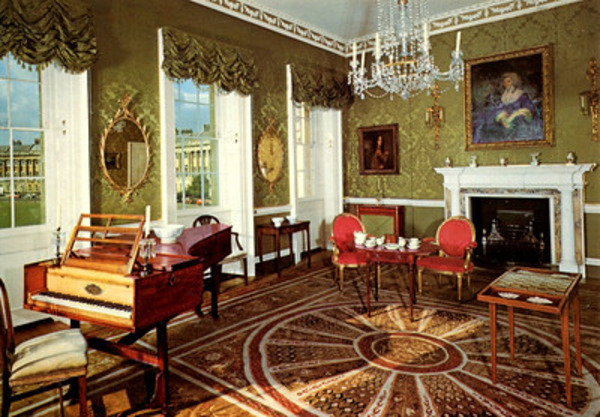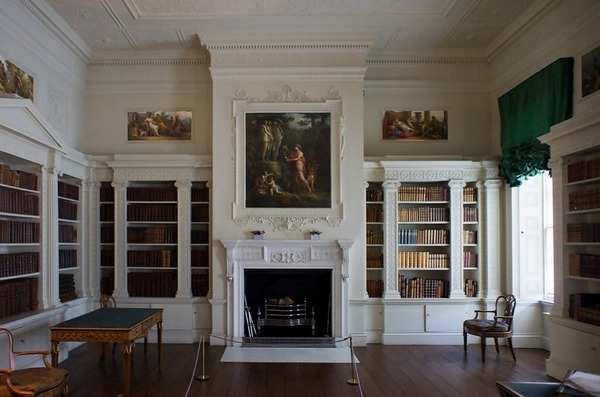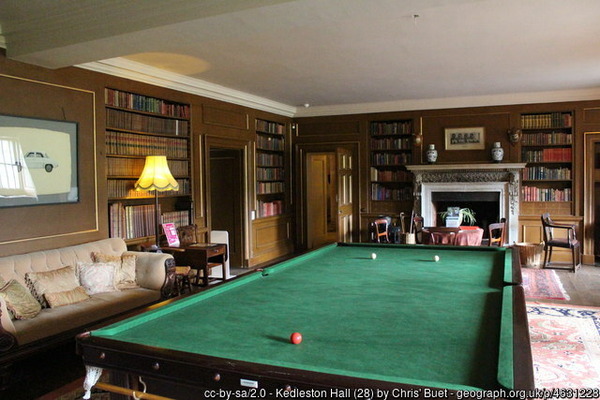
Georgian Interior Design | Georgian Mouldings | Modern Style
Posted by Skirting World on 28th Jun 2024
Georgian Interior Design

Originating in the early 18th century, Georgian interior design is deeply rooted in the principles of classical architecture, influenced by the Renaissance and the works of great architects like Andrea Palladio. The design philosophy focuses on creating harmonious, proportionate spaces that create a sense of order and sophistication.
Key Principles of Georgian Interior Design
Symmetry
Georgian interiors are renowned for their perfect balance and symmetrical arrangements. Rooms are often designed to mirror each other, with matching furniture and décor elements on each side to create a cohesive and harmonious look.
Proportion
The Golden Ratio is often applied to create harmonious spaces and furniture layouts. This mathematical ratio, which is approximately 1.618 to 1, ensures that all elements within a room are perfectly balanced and aesthetically pleasing.
Classical Motifs
Greco-Roman elements are frequently incorporated into decorative features. These can include columns, pilasters, and cornices, as well as decorative motifs like acanthus leaves, egg-and-dart mouldings, and classical friezes.
Key Features of Georgian Interiors
Architectural Features
- High ceilings
- Ornate cornices
- Symmetrical window placement
- Panelled walls
These architectural features create a sense of height and grandeur, making spaces feel open and airy. The use of symmetry in window placement enhances the aesthetic appeal while ensuring balanced lighting and ventilation throughout the room.
Furniture Styles
- Chippendale
- Hepplewhite
- Sheraton
- Queen Anne
Georgian furniture styles are renowned for their elegance and intricate craftsmanship. Chippendale furniture, for example, is known for its elaborate carvings and Chinese-inspired designs, while Hepplewhite furniture is characterised by its refined, slender lines and use of delicate inlays.
Decorative Elements
- Crystal chandeliers
- Ornate mirrors
- Gilded picture frames
- Oriental rugs
Decorative elements in Georgian interiors often include luxurious materials and intricate designs. Crystal chandeliers and ornate mirrors add a touch of opulence, while Oriental rugs bring warmth and texture to the space.
Materials
- Mahogany
- Walnut
- Silk
- Damask
The materials used in Georgian interiors were chosen for their quality and durability. Mahogany and walnut are popular choices for furniture, providing a rich, deep colour and beautiful grain patterns. Silk and damask fabrics are often used for upholstery and drapery, adding a luxurious touch to the décor.
Design Tip
When incorporating Georgian elements into a modern home, consider using a mix of authentic period pieces and contemporary interpretations to create a balanced, liveable space. This approach allows you to enjoy the timeless elegance of Georgian design while maintaining the functionality and comfort of a modern home.
Lighting in Georgian Interiors
Chandeliers
Ornate crystal chandeliers were focal points in formal rooms, providing both illumination and grandeur.
Candle Sconces
Wall-mounted candle holders added warmth and ambiance to hallways and smaller spaces.
Oil Lamps
Portable oil lamps provided flexible lighting options and were often decorative pieces in their own right.
Georgian Colour Palette
The Georgian colour palette is characterised by subdued elegance and natural hues.
These colours were often derived from natural pigments and were used to create a calm, serene environment.
The use of muted tones allowed for a sophisticated backdrop that highlighted the fine details and craftsmanship of Georgian furnishings and decorative elements.
Colour Palette Evolution
The Georgian colour palette evolved from light, delicate hues to deeper, richer tones over time.
By understanding this evolution, you can choose colours that best reflect the period of Georgian design you wish to emulate in your own home.
Pros & Cons of Georgian Design
Pros
- ✓ Timeless elegance
- ✓ Well-proportioned spaces
- ✓ Versatile style
- ✓ Rich historical context
Cons
- ✗ Can feel overly formal
- ✗ May require extensive renovations
- ✗ Potentially high cost
- ✗ Challenges in smaller, modern spaces
- ✗ May require large spaces
Timeline of Georgian Design
Understanding the historical context of Georgian design can provide deeper insights into its enduring appeal. Here is a timeline highlighting key milestones in the development of Georgian interior design:
1714
Beginning of the Georgian era with the accession of King George I. This period marked the start of significant developments in architecture and interior design, influenced by classical principles.
1754
Publication of Robert Adam's "Ruins of the Palace of the Emperor Diocletian at Spalatro". Adam's work had a profound influence on Georgian architecture and interior design, introducing elements of neoclassicism.
1762
Thomas Chippendale publishes "The Gentleman and Cabinet Maker's Director". This book became a seminal work in furniture design, showcasing Chippendale's distinctive style and craftsmanship.
1837
End of the Georgian era with the accession of Queen Victoria. The transition marked a shift towards the Victorian style, but Georgian principles continued to influence interior design for years to come.
Did You Know?
The Georgian era spans from 1714 to 1837, covering the reigns of four successive King Georges of Great Britain.
Iconic Georgian Interiors
Here are a few notable examples of historic homes and estates in the UK which exemplify Georgian design

No. 1 Royal Crescent, Bath by mualphachi ([CC BY-SA 2.0](https://creativecommons.org/licenses/by-sa/2.0/))

Osterley Park House, London by Maxwell Hamilton ([CC BY 2.0](https://creativecommons.org/licenses/by/2.0/))

Kedleston Hall, Derbyshire
"The essence of Georgian design lies in its ability to create spaces that are both grand and inviting, formal yet comfortable." - Sir John Soane
Spotlight: Georgian Furniture Styles
Georgian Design Checklist
To help you get started with your Georgian-inspired interior or renovation, here is a checklist of essential elements:
Essential Elements for Your Georgian-Inspired Space
The Golden Ratio
The Golden Ratio, a key principle in Georgian design, ensures that proportions are harmonious and pleasing to the eye. Here's a visual representation of how the Golden Ratio is applied:
The Golden Ratio (1:1.618) often guided Georgian architects and designers in creating harmonious proportions.
Georgian Style in Modern Homes
Adapt
Modify Georgian principles to suit modern living spaces and lifestyles. This can include simplifying decorative elements or using contemporary materials while maintaining the overall aesthetic of balance and proportion.
Blend
Combine Georgian elements with contemporary design for a unique aesthetic. This can be achieved by mixing antique furniture with modern pieces or incorporating Georgian motifs into a minimalist interior.
Innovate
Use modern materials and techniques to reimagine Georgian design principles. This approach allows you to create a space that is both historically informed and forward-thinking, offering the best of both worlds.
- Mix old and new: Combine antique Georgian pieces with modern furniture for a eclectic look.
- Update the colour palette: Use contemporary colours while maintaining the Georgian principle of a cohesive scheme.
- Simplify ornamentation: Choose a few key decorative elements rather than overwhelming the space.
- Modernise lighting: Incorporate contemporary lighting fixtures that echo Georgian shapes and proportions.
- Open up spaces: While respecting symmetry, consider creating more open-plan areas for modern living.
Georgian Interior Mouldings
Georgian interior design is known for its intricate mouldings that emphasize symmetry and proportion.
Key Types of Georgian Mouldings
Skirting Boards
- Tall and ornate designs
- Often featuring intricate carvings
- Protect walls and provide a finished look
Georgian skirting boards add depth and character, protecting walls from scuffs.
Picture Rails
- Installed high on the wall
- Used to hang pictures without damaging walls
- Adds a horizontal line that enhances room proportions
Picture rails create a visual break and provide a convenient way to hang artwork.
Wall Panelling
- Full or half-height panelling
- Often includes wainscoting
- Provides texture and depth
Wall panelling adds texture and sophistication with full or half-height designs.
Architrave
- Decorative moulding around doors and windows
- Emphasizes structural elements
- Often features intricate detailing
Architrave mouldings frame doors and windows, adding elegance and detail.
Design Tip
Choose mouldings based on the scale of the room. Larger rooms can accommodate taller, more elaborate mouldings, while smaller spaces benefit from simpler designs.
Conclusion
Georgian design continues to inspire and influence modern interiors, offering a perfect blend of elegance, proportion, and timeless beauty. Whether you're restoring a period property or infusing your contemporary home with classic charm, Georgian design principles offer a solid foundation for creating sophisticated, balanced interiors that stand the test of time.







